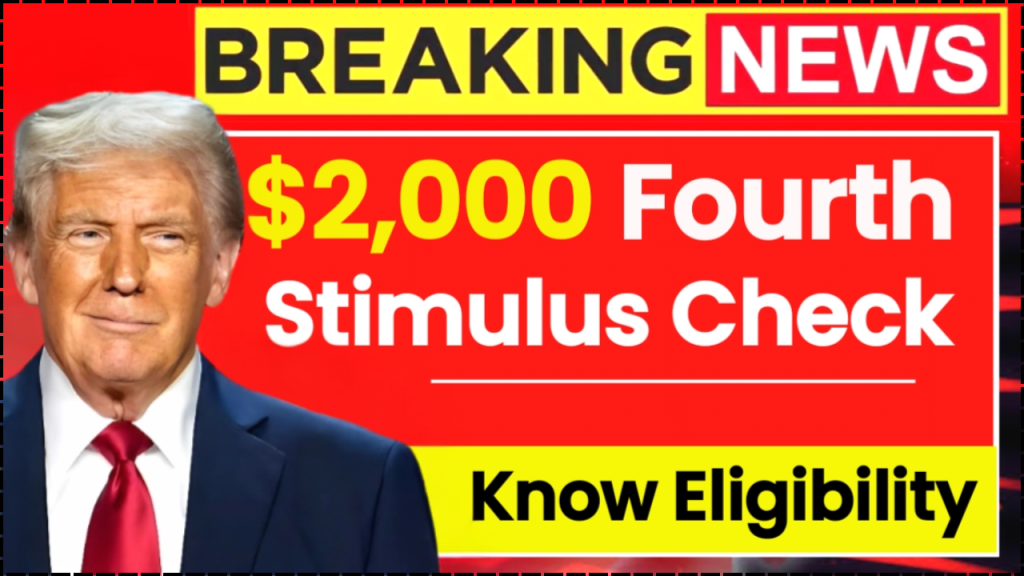
As the cost of living continues to climb, millions of Americans are still grappling with financial pressure from high prices on essentials like food, housing, and gasoline. In response to these ongoing challenges, there has been increasing discussion around a potential $2,000 Fourth Stimulus Check. Although no official legislation has been approved yet, lawmakers are seriously considering various forms of economic relief to help struggling families. This article offers a detailed look into the possible $2,000 stimulus payment, covering eligibility requirements, expected payment timelines, and alternative support options if the stimulus doesn’t move forward.
Why Another Stimulus Check Is Being Considered?
The main goal behind the proposed $2,000 stimulus payment is to assist families who are finding it hard to make ends meet. Even though the COVID-19 pandemic has officially ended, many individuals are still dealing with the financial aftermath, including mounting debts and higher everyday expenses like electricity and groceries. Economic analysts argue that putting more money directly into people’s pockets could stimulate the economy, drive up consumer spending, create more job opportunities, and eventually boost government tax revenues. These potential benefits are motivating policymakers to seriously examine new financial assistance measures.
Overview of the Potential Fourth Stimulus Program
If the $2,000 stimulus check is approved, it would likely be overseen by the Internal Revenue Service (IRS), following the same system used for previous stimulus rounds. Eligible recipients could receive up to $2,000 each. While there is no official distribution date yet, experts suggest that payments could potentially begin rolling out toward the end of 2025 or early 2026. Citizens are advised to keep a close watch on announcements from official sources like the IRS website for updates regarding eligibility and timelines.
Who Would Qualify for the $2,000 Stimulus Payment?
If the Fourth Stimulus Check program moves forward, the eligibility requirements would probably mirror those set for earlier stimulus checks:
- Single taxpayers earning less than $75,000 annually would likely qualify for the full amount.
- Married couples filing jointly with combined incomes under $150,000 would also be eligible for the full payment.
- Recipients of Social Security benefits, including SSI (Supplemental Security Income) and SSDI (Social Security Disability Insurance), would probably receive their payments automatically without needing to take any action.
- Non-filers or individuals who don’t regularly submit tax returns might need to update their records with the IRS to ensure they can receive their payments promptly.
This approach would aim to ensure that assistance reaches a broad section of Americans, including low-income households, retirees, and individuals with disabilities.
FTB $6000 Stimulus Checks Approved in 2025 – Payment dates, Eligibility
$2,500 Stimulus Checks Coming in April 2025 – Check Eligibility And Payment Dates
$1,400 Stimulus Check 2025, Last Chance to Claim Your IRS Recovery Rebate Credit
Expected Payment Schedule and Distribution Methods
Since no formal bill has been passed yet, there is no confirmed timeline for when the Fourth Stimulus Check will be distributed. However, if legislation is approved, financial analysts predict that payments could start arriving by late 2025 or early 2026.
Similar to previous distributions, the IRS would likely send the payments through multiple methods:
- Direct deposit to registered bank accounts (the fastest option)
- Mailed paper checks
- Prepaid debit cards for individuals without direct deposit information
To avoid any processing delays, citizens are encouraged to make sure their tax information and banking details are current with the IRS.
Alternative Forms of Financial Assistance
If the proposed $2,000 stimulus payment does not pass through Congress, there are other potential relief measures under consideration. These may include:
- Expanded Child Tax Credit payments for families with children
- Increased funding for food assistance programs like SNAP (Supplemental Nutrition Assistance Program)
- Additional rent and housing support programs
- Enhanced unemployment benefits for those still facing job loss or reduced working hours
While these options may not offer the immediate financial relief of a direct stimulus check, they can still significantly ease financial burdens for many families facing ongoing economic struggles.
Addressing Previous Concerns About Inclusivity
During earlier stimulus rounds, many individuals receiving Social Security, SSI, and SSDI benefits raised concerns about feeling left out or facing delays in getting their payments. Learning from past experiences, policymakers are now placing greater emphasis on ensuring that any future stimulus efforts are more inclusive. The goal is to make sure that eligible Americans receive assistance promptly, regardless of employment status or the nature of their income.
This heightened focus on inclusivity represents a positive shift in government policy, acknowledging the diverse financial challenges faced by different groups of citizens.
Final Words: What to Expect
While a $2,000 Fourth Stimulus Check has not yet been officially approved, the growing public demand and economic need have made it a hot topic among lawmakers. Discussions continue in Washington, and many officials recognize the urgent financial strain on millions of households across the country.
For now, it’s crucial for citizens to stay informed through reliable government channels and to explore any available financial aid programs. Whether or not this particular stimulus payment becomes a reality, the attention to ongoing economic hardships shows that many leaders understand the need for continued support.